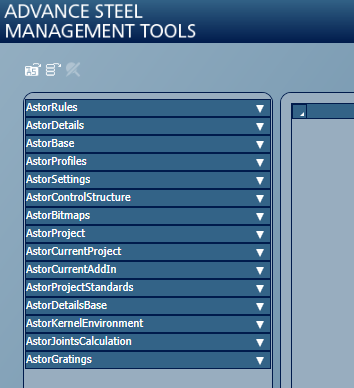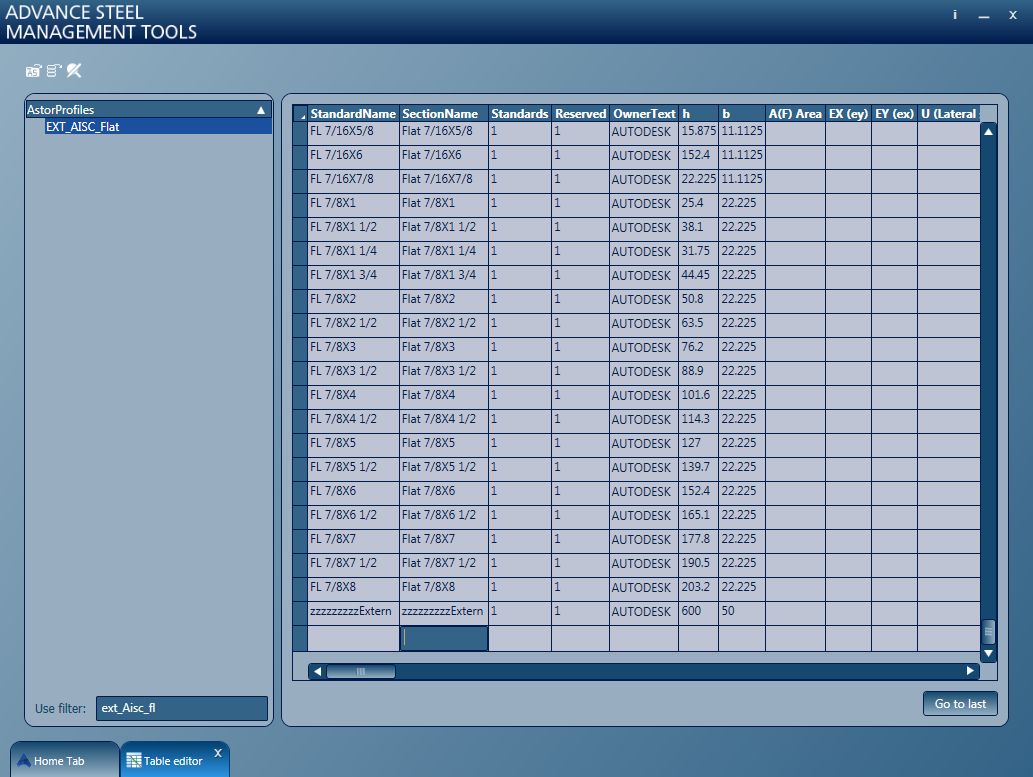To add a new size to an existing shape
Adding a new size to an existing shape requires editing the AstorProfiles database using the Table Editor from the Management Tools application or any other .mdb editor (e.g. Microsoft Access). The AstorProfiles2016.mdb database is located by default in C:\ProgramData\Autodesk\Advance\Data\ .
- Start Management Tools: Home > Settings > Management Tools
- Start the “Table editor”.
- Select “Open ODBC”, by clicking the first icon in the upper left corner of the Table editor tab.
- Open AstorProfiles.
- Open the table associated to the existing profile to which a new size needs to be added.
- In the AstorProfiles database, open “ProfileMasterTable”.
- Scroll right and find the column associated to the Advance Steel product language currently installed (e.g. for an US English installation, the column is called USEnglish, for UK English installation, the column is called English etc).
- Use the “Find and Replace” option on the language column.
- Search based on the Section Name displayed in the interface.
- Once the definition line is found, note the table name from the “TableName” column and open it.

To identify the table:

- Select the last line
- Enter a new line with the section size. The columns require the following settings:
- StandardName - the name that appears at the interface if the column with the installation language is left empty.
- SectionName - the profile's internal name that can be used in other configurations. It will not appear at the interface or created documents. It can be the same as StandardName.
- Standards - set it to 1.
- Reserved - set it to 1 for a hot rolled section; 2 for a cold rolled section that is unwoundable. For an unwindable section, the geometry needs to allow unfolding – the thickness has to be constant throughout the whole contour.
- OwnerText – set it to the current Author (new authors can be added to Advance Steel from the "Management Tools 2016 / Options" setting). A custom set Owner will allow the section to be merged to the next version.
- Next there are a series of geometric parameters. Those vary based on section type (I section will offer web/flange dimensions, RO sections will only offer inner/outer diameters etc.)
- Besides the geometric parameters the profile also accepts design parameters that are eventually used during joint design.
- Last set of columns contain the language translation. Using this, a section can be named differently based on the product language used during installation, even if the section remains constant. If the translation column is left empty, Advance Steel uses the StandardName value.
